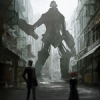quote:
Original post by Tacit
Stories are not inherently linear...just the stories that we''ve been reading and writing for the past thousands of years. Or, perhaps I should say that stories while inherently linear in structure are not limited to being linear. Or at least, this is what I believe.
I think we''d do well to distinguish between what I''d like to call "linear" and "static" media.
Static media cannot be changed. They are set in stone, and any attempt at significant reinterpretation would violate the fundamental "truth" or content that is in the medium. Examples include histories and works such as the Bible. Their inverse is, of course, dynamic media. Most media can be considered dynamic at some level, and I think your
Beowulf example is an instance of media "dynamicism." Note, however, that in order to reinterpret the work (and therefore give us a dynamic variant), Heany first had to experience/absorb it in linear and relatively static fashion.
Linear media progress from one notion to another, independent of the user/audience. They may contain unexpected twists and turns, but those are built into the medium. Most of our media are linear - all recorded forms, at least. Live performance, on the other hand, is a non-linear medium because the performers can interact with and influence the audience,
and vice versa. While some media may present occurences out of sequence -
Memento,
Go and other excellent examples given by Infinisearch - the final story is still linear in terms of user interaction.
When I use the term non-linear, I speak of the type of dynamicism introduced with games, where the user''s choices and preferences completely alter the outcome and thus the experience. Imagine if you could stimulate the main character in an action movie: make the right choices and you fulfill the objective; make the wrong ones and your movie ends significantly earlier than other people in the "theatre."
Not a great example ("Hey! I paid $7.50 for this!")
There was a science fiction short story about dream theatres and personal dream machines, in which users experienced "dreams" (more like idyllic fantasies) concocted by people deemed to have natural skill (it was a direct neural interface). The key part was that since the interface was direct, the user''s tastes and preference would "color" the dream and customize it to have greater impact on the user.
The full definition of this paradigm has not been agreed on; it is a continuing search to discover what works and what doesn''t, where interactivity adds to "non-linearity" and where it detracts from it. Even the vocabulary of discussion is not finalized. We merely compare, contrast and discuss the ideas and ideals of the many here. I do not presume to be some sort of authority, or even to have the final say within the limited scope of this thread. I aim simply to stimulate thought and creativity, and hopefully to get to play/experience some of your innovative products!
[ GDNet Start Here | GDNet FAQ | MS RTFM | STL | Google ]
Thanks to Kylotan for the idea!






